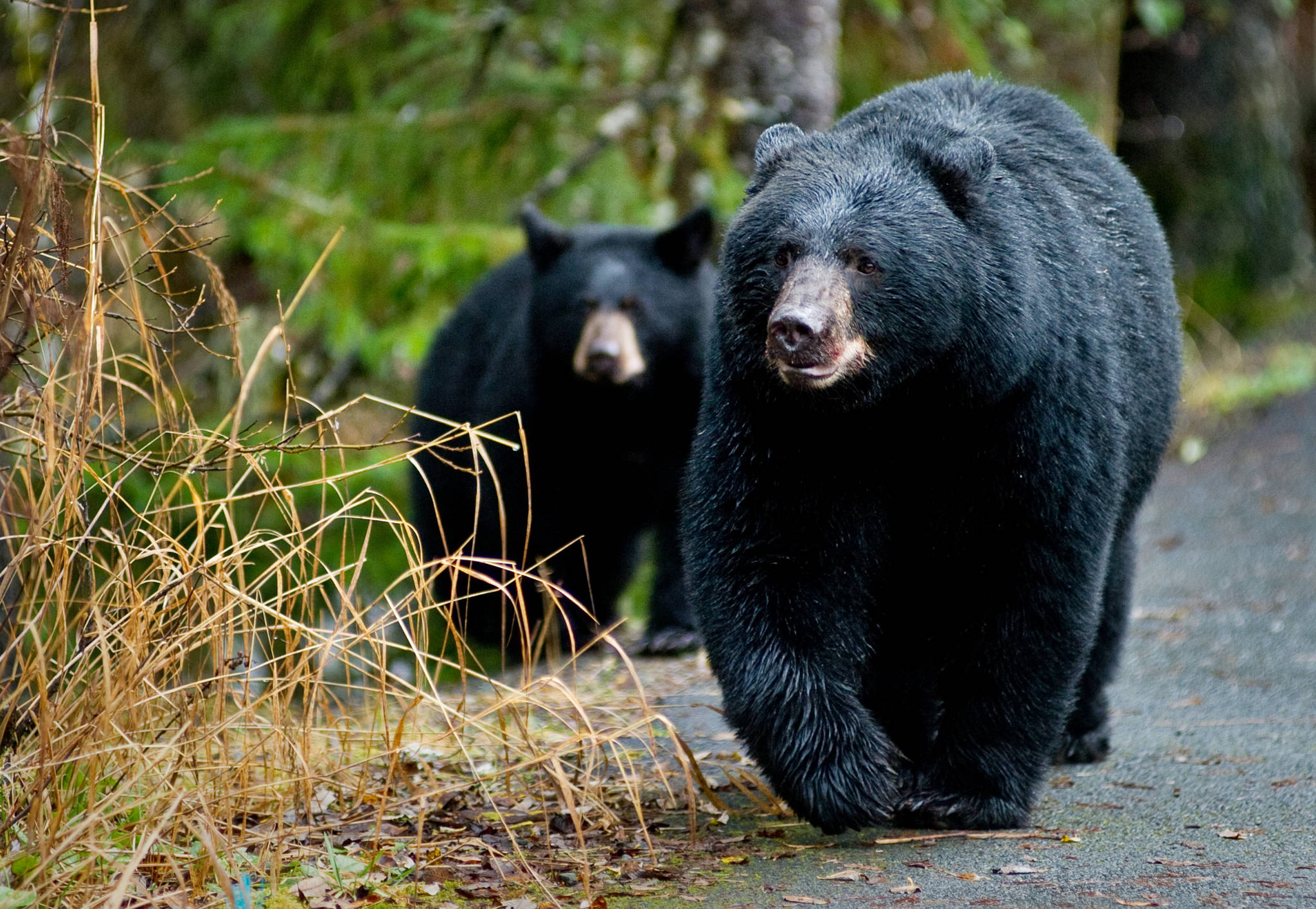Are there more bears wandering around Juneau these days with the lack of tourists causing noise and traffic?
There might be. It’s tricky to tell, say experts.
“It’s complicated. With bears, and a lot of wildlife, it’s about food and sex,” said LaVern Beier, a retired bear specialist with more than 40 years with the Alaska Department of Fish and Game. “The environment is a huge factor in it too.”
The feeding patterns of bears can drive them into civilization to trash scavenge, Beier said.
“It’s food-driven. Last year was one of our driest, hottest summers that we’ve ever had. This year has been kind of the opposite,” Beier said. “To the bears, the natural landscape is a mosaic of food. Hopefully they don’t get human food. If they get human food, they become a problem. Bears could coexist in Juneau very well if they didn’t get garbage.”
Rainy weather helps with the season’s growth of berries, Beier said.
“Bears desperately need food this time of year. How do we figure out how not to get close to the bears?” said retired U.S. Forest Service ranger Laurie Craig, speaking especially about bears near Mendenhall Glacier. “We always had rangers around. How do we as good Juneau citizens take what we really all know and apply it properly to keep bears wild and people safe?”
Family files wrongful death suit against Juneau police, city
Bears will get used to eating garbage if there’s not enough other food available, Craig said. The lower amounts of traffic, both foot and vehicle, may explain their willingness to wander into areas they’d normally steer clear of, Beier said.
“There’s less tourists, there’s less traffic. I could certainly see how the bears would tune into the sounds there. The glacier is the second most-visited place in Alaska,” Beier said. “I could see how those bears by the glacier would notice that. It’s not like those bears by the glacier go downtown. Bears really tune into those sounds.”
While the DF&G doesn’t keep track of the exact numbers of bears, they say based on calls, those numbers may be bigger than they have recently been.
“We don’t have a count of bear numbers. In general, it seems like we had more in the area than last year. It’s more like a normal year than last year,” said Roy Churchwell, a biologist with DF&G. “The number of bears in town depends on the natural food availability outside of town.”
Many of those bears are from yearlings, who were born a year or two ago and no longer live with their mom.
[Lecture examines behavior of not-quite adult bears]
“There are definitely a lot of yearlings around town and they generate a lot of calls by people who think they should have a mom,” Churchwell said. “We describe the yearlings as being the size of a medium-sized dog or a little smaller (the size of a golden retriever or smaller German shepherd dog.)”
Preventing encounters
“Our big three are garbage, bird seed, and cars,” said Abby McAllister, an education specialist with DF&G. “We think the bears can get in but they can’t get out (of cars).Their noses are seven times better than a bloodhound. Bears have gotten into cars just for coffee.”
McAllister recalled a recent case where a bear had gotten into a car for a bag of peanuts, and ended up exiting the vehicle by breaching the front windshield.
Garbage cans should be bear-secure, and should remain locked up securely in a garage or other bear-proof enclosure until no earlier than 4 a.m. on the pickup day, according to city ordinance. Failure to do so could result in a $50 fine on the first offense.
• Contact reporter Michael S. Lockett at 757.621.1197 or lockett@juneauempire.com.

